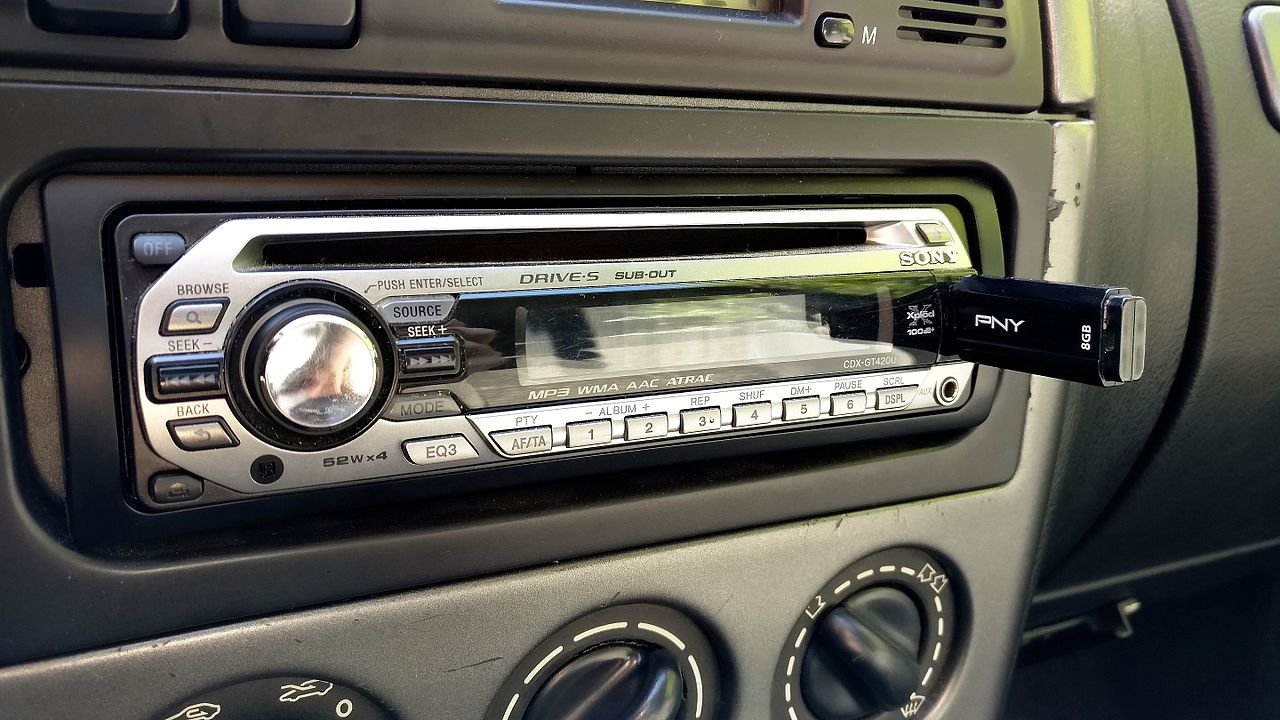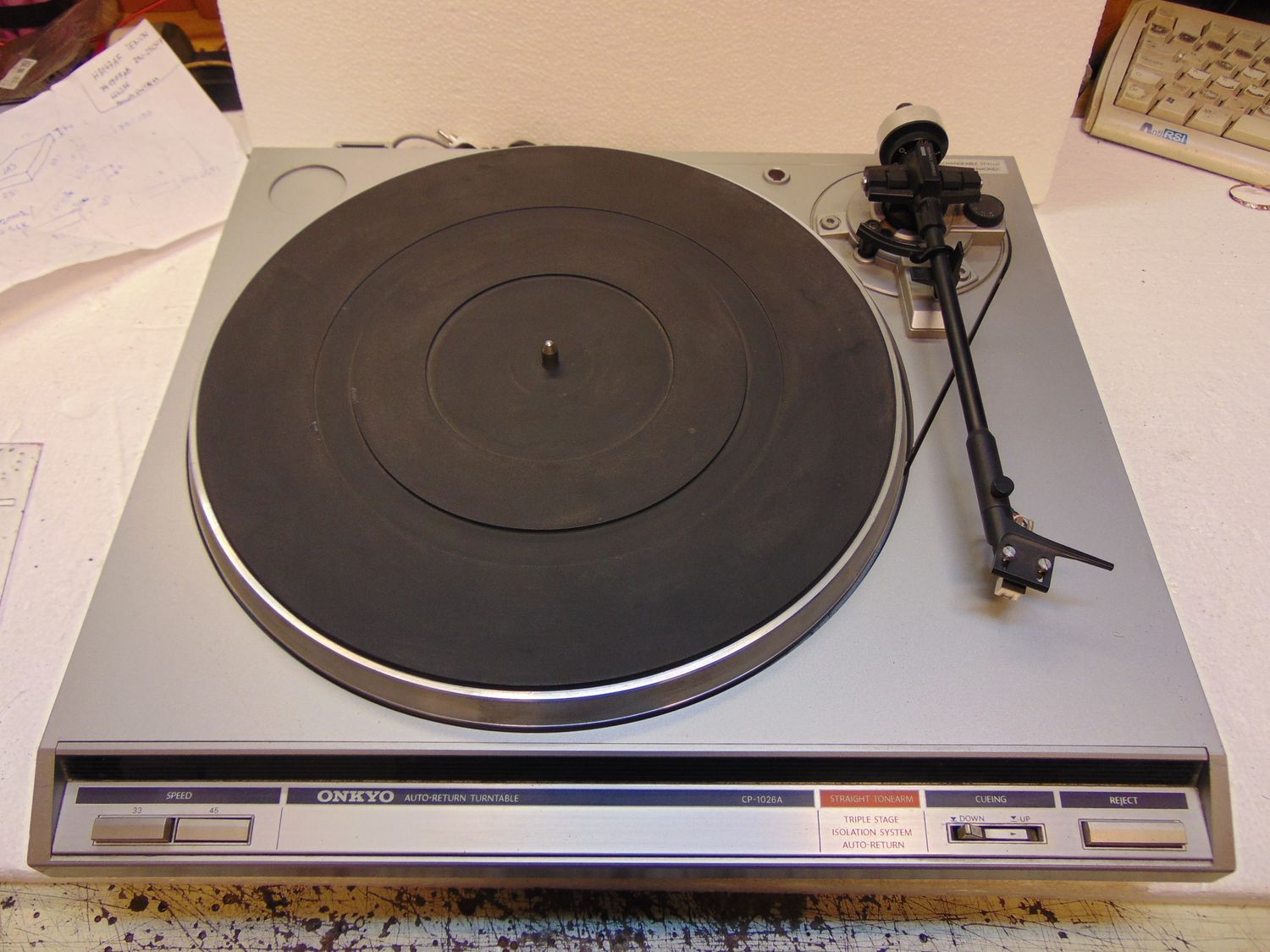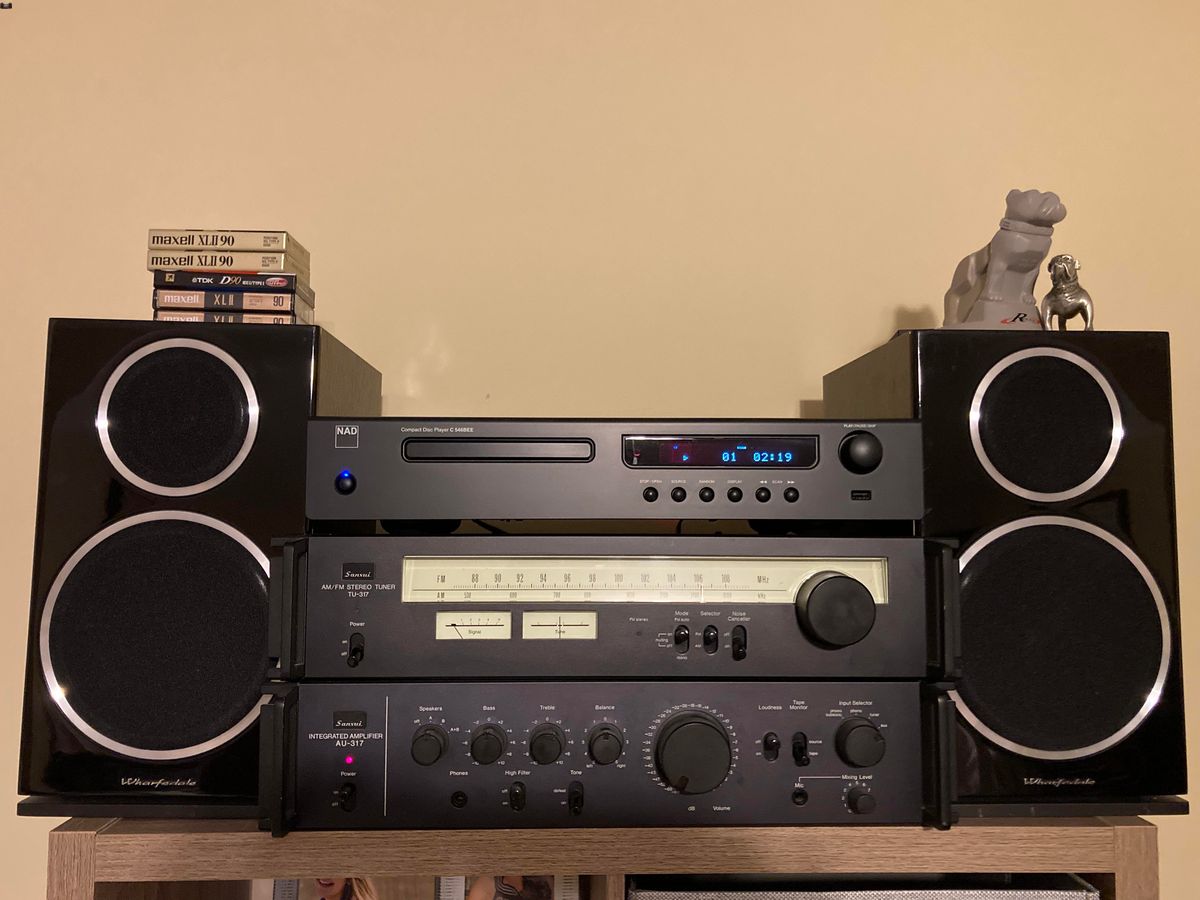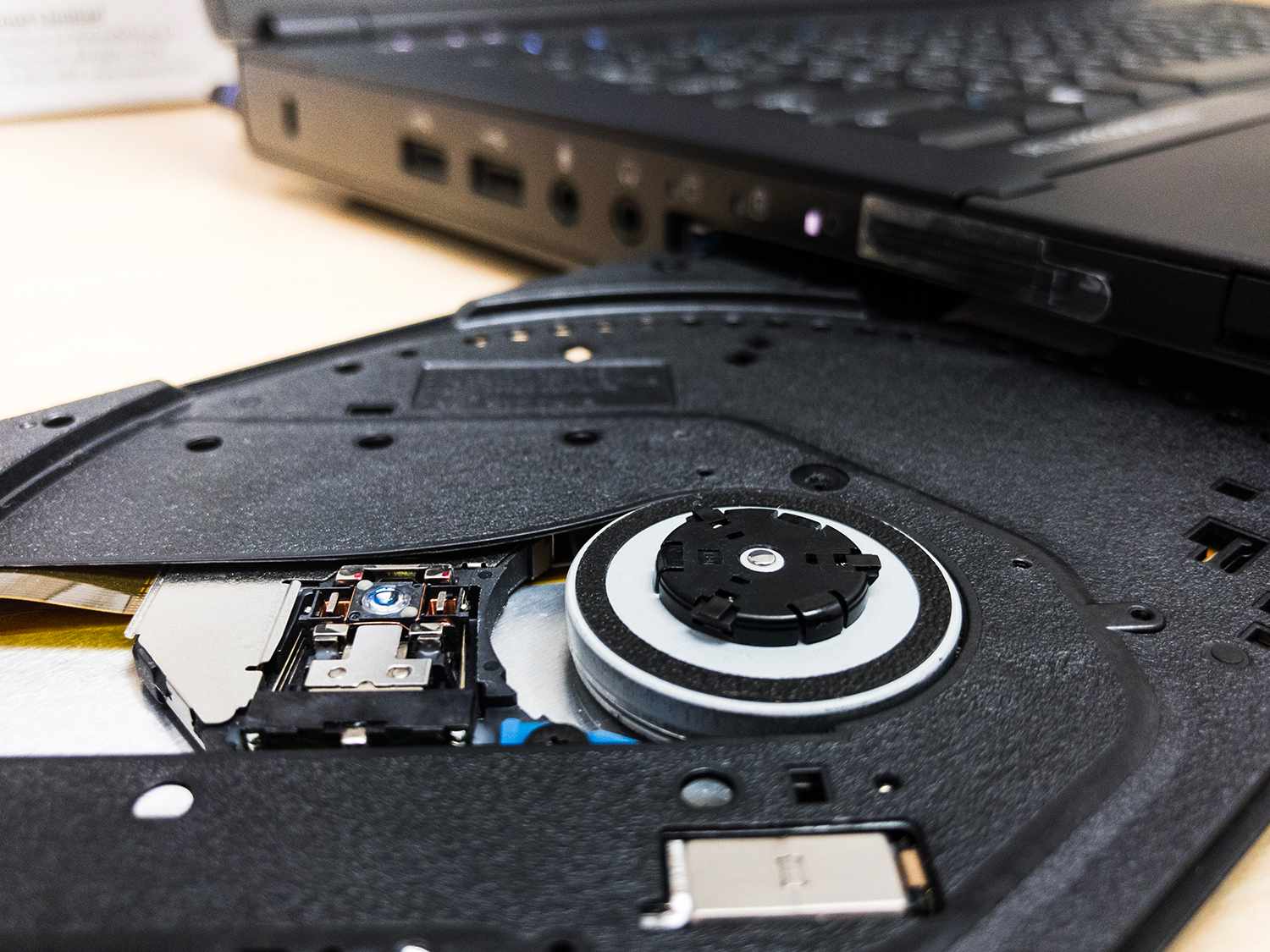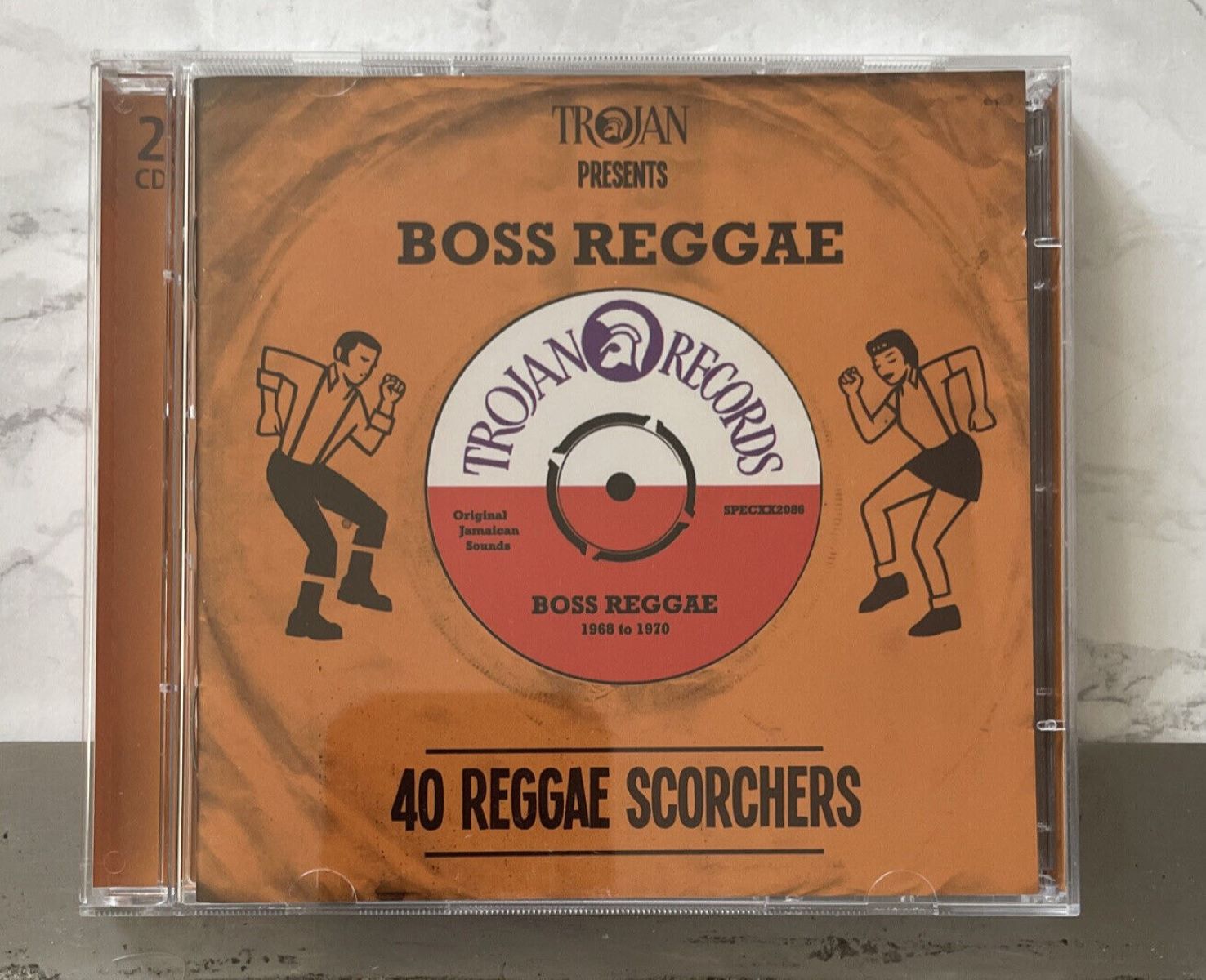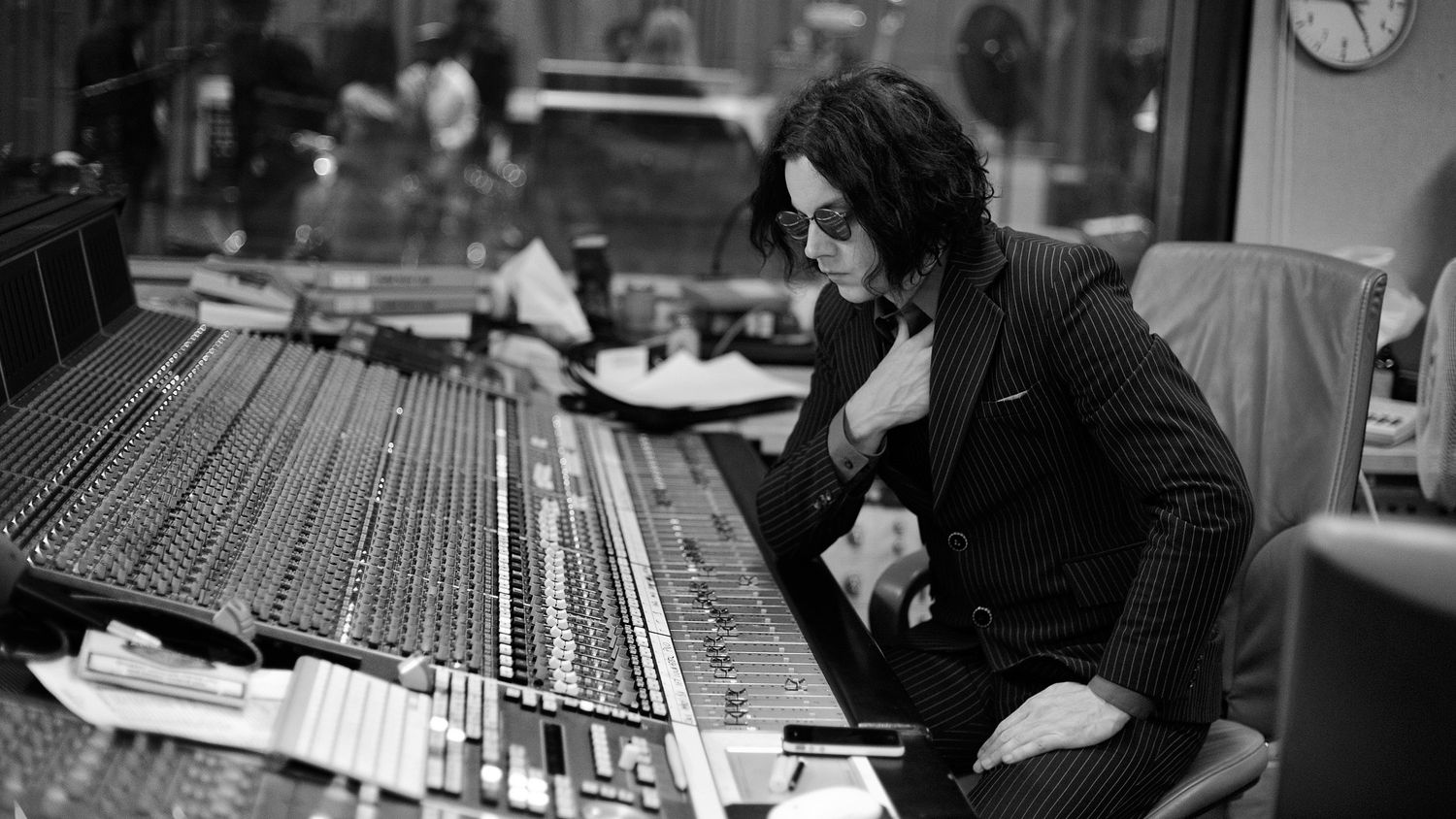Home>Production & Technology>Sound>Screeching Sound When Driving


Sound
Screeching Sound When Driving
Published: December 19, 2023
Experiencing a screeching sound while driving? Don't ignore it! Learn the possible causes and get it checked by a professional.
(Many of the links in this article redirect to a specific reviewed product. Your purchase of these products through affiliate links helps to generate commission for AudioLover.com, at no extra cost. Learn more)
Table of Contents
- Introduction
- Causes of Screeching Sound When Driving
- Worn Brake Pads
- Loose or Worn Drive Belt
- Faulty Wheel Bearings
- Misaligned or Unbalanced Tires
- Suspension Issues
- Problems with the Transmission
- Issues with the Exhaust System
- Damaged or Faulty Brake Rotors
- Problems with the Power Steering System
- Troubleshooting and Solutions
- Conclusion
Introduction
When you’re driving along and suddenly hear a screeching sound, it can be quite unsettling. Not only is it annoying, but it can also be a sign of an underlying issue with your vehicle. Understanding the potential causes of a screeching sound when driving can help you identify and address the problem promptly, ensuring the safety and performance of your car.
A screeching sound can originate from various components of your vehicle, including the brakes, belts, tires, suspension, transmission, exhaust, and more. It’s important to pay attention to the specific circumstances in which the sound occurs, such as when braking, accelerating, or turning, as this can provide valuable clues about the potential cause.
In this article, we will explore some common reasons why your vehicle may produce a screeching sound when driving. By understanding these causes, you can have a better idea of what might be going wrong and take appropriate action to resolve the issue.
Causes of Screeching Sound When Driving
There are several potential causes for a screeching sound when driving. Below are some common culprits that you should be aware of:
- Worn Brake Pads: One of the most common reasons for screeching sounds is worn brake pads. When the brake pads become thin and the metal indicator comes into contact with the rotor, it produces a high-pitched screech. This sound is typically heard when applying the brakes.
- Loose or Worn Drive Belt: A loose or worn drive belt can cause a screeching sound, especially when the engine is under load. The belt may be slipping, which generates the screech. This issue is commonly heard when accelerating or turning the steering wheel.
- Faulty Wheel Bearings: Worn or damaged wheel bearings can produce a screeching sound while driving. The noise is often more prominent when turning and may be accompanied by a grinding sensation. If left unaddressed, faulty wheel bearings can lead to more severe damage and even wheel detachment.
- Misaligned or Unbalanced Tires: When your tires are out of alignment or unbalanced, they can create a screeching noise. Uneven tire wear, steering wheel vibrations, and a pulling sensation may also be indicators of this issue. Proper alignment and balancing can help eliminate the screeching sound.
- Suspension Issues: Problems with your vehicle’s suspension, such as worn-out bushings or struts, can lead to screeching sounds. The noise may be heard when going over bumps or during turns. Check for any signs of suspension wear and have them replaced if necessary.
- Problems with the Transmission: A malfunctioning transmission can generate screeching sounds. Issues like low transmission fluid, worn-out gears, or a failing clutch can contribute to the noise. It’s crucial to have your transmission inspected and repaired by a professional if needed.
- Issues with the Exhaust System: A damaged or faulty exhaust system can produce a screeching sound, often resembling a metallic rattling noise. This may indicate a loose or broken component within the exhaust system, such as a loose heat shield or a muffler issue.
- Damaged or Faulty Brake Rotors: Over time, brake rotors can become warped, which can result in a screeching sound when braking. Warped rotors can cause the brake pads to make uneven contact with the rotor surface, leading to noise and decreased braking performance. It’s essential to have the brake rotors inspected and replaced if necessary.
- Problems with the Power Steering System: A faulty power steering system can contribute to a screeching noise, particularly during turns. Low power steering fluid or a failing power steering pump can cause the belt to slip and produce the screech. Have the power steering system checked and serviced to resolve the issue.
Identifying the specific cause of the screeching sound may require further inspection or assistance from a qualified mechanic. It’s essential to address these issues promptly to ensure the safety and functionality of your vehicle. The next section will provide some troubleshooting guidelines and solutions to help resolve these problems.
Worn Brake Pads
One of the most common causes of a screeching sound when driving is worn brake pads. Brake pads are designed with a metal indicator that makes contact with the brake rotor when the pads become thin. This contact produces a high-pitched screech, serving as an audible warning that it’s time to replace the brake pads.
You may notice the screeching sound primarily when you apply the brakes. The noise can be more pronounced during braking at higher speeds or when applying more pressure on the brake pedal. It’s important not to ignore this sound, as worn brake pads can diminish your vehicle’s braking performance and compromise your safety on the road.
To resolve the issue of worn brake pads, follow these steps:
- Check the thickness of your brake pads. You can do this visually by observing the brake pad through the caliper or by removing the wheel to get a better look.
- If the brake pads appear to be thin or less than the recommended thickness, it’s time to replace them. Consult your vehicle’s manual or seek assistance from a qualified mechanic to find the correct replacement pads for your specific make and model.
- Brake pads are typically replaced in pairs for optimal performance, so it’s advisable to replace both pads on the same axle.
- Ensure that the new brake pads are installed correctly, following the manufacturer’s instructions and any specific guidelines for your vehicle.
- Once the new brake pads are installed, it’s important to properly bed them in. This involves gradually increasing the braking force over the first few hundred miles to allow the pads to properly mate with the rotor surface.
Regularly inspecting and maintaining your brake pads is crucial for your vehicle’s safety. Be proactive in monitoring their condition and addressing any signs of wear or deterioration. By keeping your brake pads in good shape, you can avoid the screeching sound and ensure reliable braking performance.
Loose or Worn Drive Belt
A loose or worn drive belt can be another common cause of a screeching sound when driving. The drive belt, also known as the serpentine belt, connects various engine components such as the alternator, power steering pump, and air conditioning compressor. When the belt becomes loose, it may slip and produce a high-pitched screeching noise.
You may notice the screeching sound when you start the engine or when you accelerate or turn the steering wheel. It’s important to address this issue promptly, as a loose or worn drive belt not only causes noise but can also lead to further damage to the engine components it drives.
To address the issue of a loose or worn drive belt, follow these steps:
- Inspect the drive belt visually. Look for signs of wear, cracking, or fraying. If the belt appears damaged, it will need to be replaced.
- Check the tension of the belt. The proper tension ensures that the belt grips the pulleys securely without excessive slack. Refer to your vehicle’s manual or consult a professional to determine the correct tension for your specific make and model.
- If the belt tension is incorrect, adjust it accordingly. Most vehicles have an adjustable tensioner that can be tightened or loosened using the appropriate tools. Follow the manufacturer’s instructions or seek professional assistance if needed.
- If the drive belt is worn or damaged, it’s crucial to replace it. Obtain a new belt that matches the specifications of your vehicle and follow the manufacturer’s recommendations for installation.
- After installing the new belt, make sure it is properly tensioned and aligned with the pulleys.
Regularly inspecting and maintaining your drive belt is important to prevent any potential issues. Be attentive to signs of wear, and address them promptly to avoid further damage and ensure optimal performance of your vehicle.
Faulty Wheel Bearings
Faulty wheel bearings can be a potential culprit behind the screeching sound when driving. Wheel bearings are responsible for allowing the wheels to rotate smoothly on the axles. Over time, these bearings can wear out or become damaged, leading to a screeching noise while driving.
The screeching sound caused by faulty wheel bearings is often more prominent when making turns. You may also notice a grinding sensation or vibration accompanying the noise. It’s important to address this issue promptly, as worn or damaged wheel bearings can lead to more severe damage and even wheel detachment.
To address the issue of faulty wheel bearings, follow these steps:
- Identify which wheel or wheels may have faulty bearings. Listen carefully to the screeching sound when driving and note which side of the vehicle the noise is coming from.
- Jack up the vehicle and inspect the wheel for any signs of play or looseness. If the wheel exhibits excessive movement or wobbling, it’s likely an indication of a faulty wheel bearing.
- Replacing wheel bearings typically requires specialized tools and knowledge. It’s advisable to seek assistance from a professional mechanic to ensure proper installation and alignment.
- During the repair process, it’s common practice to replace both wheel bearings on the same axle, even if only one is showing signs of wear or damage. This helps maintain balance and symmetry in the vehicle’s suspension system.
- After the new wheel bearings are installed, it’s important to have them properly lubricated to ensure smooth operation. Follow the manufacturer’s recommendations for the appropriate lubricant to use.
Regular maintenance and inspection of the wheel bearings can help prevent premature wear and damage. Pay attention to any signs of noise or roughness in the wheels and address them promptly to ensure the safety and performance of your vehicle.
Misaligned or Unbalanced Tires
Misaligned or unbalanced tires can be a common cause of the screeching sound when driving. When your tires are out of alignment or unbalanced, they can create uneven wear patterns, leading to noise and vibrations that result in a screeching sound.
You may notice the screeching sound becoming more pronounced during turns or at certain speeds. In addition to the noise, you may also experience steering wheel vibrations or even a pulling sensation while driving. It’s important to address these issues promptly, as misaligned or unbalanced tires can affect your vehicle’s handling and overall safety.
To address the issue of misaligned or unbalanced tires, follow these steps:
- First, visually inspect your tires for any signs of uneven wear, such as bald spots or excessive wear on one side of the tread. If you notice significant wear, it may be an indication of misalignment.
- Check the tire pressure of all your tires to ensure they are inflated to the recommended levels specified by the manufacturer.
- Consider having your tires balanced by a professional. Balancing involves equalizing the weight distribution of the tire and wheel assembly, minimizing vibrations and providing a smoother ride. This can help eliminate the screeching sound caused by an imbalance.
- If misalignment is suspected, take your vehicle to a professional alignment service. They will use specialized equipment to adjust the angles of your tires, ensuring they are properly aligned with the manufacturer’s specifications.
- Regularly rotate your tires to promote even wear and prolong their lifespan. This can help prevent future issues with alignment and balance.
Proper tire maintenance, including regular alignment checks and balancing, is crucial to ensure optimal performance and safety. By addressing misalignment or imbalance, you can eliminate the screeching sound and enjoy a smoother and more comfortable driving experience.
Suspension Issues
Suspension issues can be a significant contributor to the screeching sound when driving. The suspension system of your vehicle is responsible for providing a smooth and stable ride by absorbing shocks and vibrations from the road. However, worn-out or damaged suspension components can cause noise and discomfort while driving.
You may notice the screeching sound when going over bumps, dips, or uneven road surfaces. This can indicate issues with components such as worn-out bushings, struts, or shock absorbers. Ignoring these problems can lead to a compromised driving experience and potentially unsafe conditions.
To address the issue of suspension issues, follow these steps:
- Inspect your suspension components visually. Look for signs of wear, such as cracked or damaged bushings, leaking shock absorbers, or worn-out struts. Any visible damage should be addressed immediately.
- If you suspect suspension issues, it’s best to have your vehicle inspected by a qualified mechanic. They will perform a thorough assessment to identify the specific components that are causing the noise and recommend appropriate repairs or replacements.
- Common suspension repairs may include replacing worn-out bushings, struts, or shock absorbers. It’s important to use high-quality parts that are compatible with your vehicle’s make and model.
- Consider having a wheel alignment performed after suspension repairs. This will ensure that all suspension components are properly aligned, preventing premature wear and maintaining optimal handling.
Regular maintenance and inspection of your suspension system are crucial for a comfortable and safe ride. If you suspect any issues, don’t hesitate to have them addressed promptly to eliminate the screeching sound and maintain the overall integrity of your vehicle’s suspension.
Problems with the Transmission
Problems with the transmission can be another potential cause of a screeching sound when driving. The transmission is responsible for transferring power from the engine to the wheels, allowing your vehicle to change gears and maintain the desired speed. If there are issues with the transmission, it can create noise and affect the overall performance of your vehicle.
You may notice the screeching sound when shifting gears or during acceleration. This can indicate problems such as low transmission fluid, worn-out gears, or a failing clutch. It’s important to address these issues promptly to prevent further damage to the transmission and ensure smooth and trouble-free driving.
To address the issue of transmission problems, follow these steps:
- Check the transmission fluid level using the dipstick (consult your vehicle’s manual for the specific procedure). If the fluid level is low, you may need to add more fluid according to the manufacturer’s recommendations.
- If the transmission fluid is dirty or appears burnt, it may be necessary to have the transmission flushed and the fluid replaced. This can help improve the performance and eliminate any potential issues causing the screeching sound.
- If you suspect more significant transmission issues, such as worn-out gears or a failing clutch, it’s best to consult a professional mechanic. They will have the expertise and knowledge to diagnose and repair the specific problem.
- Follow the recommendations of the mechanic regarding the repair or replacement of transmission components. It’s important to use high-quality parts that are compatible with your vehicle’s make and model to ensure proper function and longevity.
Regular maintenance and proper care of your vehicle’s transmission are essential for its longevity and performance. Follow the recommended service intervals and address any signs of transmission problems promptly to eliminate the screeching sound and maintain the overall integrity of your vehicle’s drivetrain.
Issues with the Exhaust System
Issues with the exhaust system can contribute to a screeching sound when driving. The exhaust system plays a vital role in channeling exhaust gases away from the engine and reducing noise. However, a damaged or faulty exhaust system can result in unusual sounds and compromise the overall performance of your vehicle.
You may notice a metallic rattling or screeching noise coming from the exhaust system. This can be caused by a loose heat shield, a cracked or damaged muffler, or a problem with the exhaust manifold. If left unaddressed, these issues can lead to further damage and exhaust leaks, which can affect engine performance and emissions.
To address the issue of exhaust system issues, follow these steps:
- Inspect your exhaust system visually. Look for any visible signs of damage, such as a loose or corroded heat shield, a cracked muffler, or leaks in the exhaust pipes. If you notice any issues, they should be addressed promptly.
- If the screeching sound is caused by a loose heat shield, take your vehicle to a mechanic to have it secured properly. They can either reattach or remove the loose heat shield to eliminate the noise.
- If there are cracks or damage in the muffler or other components of the exhaust system, replacement may be necessary. Consult a professional for a proper diagnosis and to determine the most appropriate course of action.
- Ensure that the exhaust system is properly aligned and secured. Loose or misaligned components can lead to vibrations and noise. Having them properly adjusted can help eliminate the screeching sound.
Regular inspection and maintenance of your exhaust system are essential for its proper functioning and to prevent any potential issues. Any signs of damage or unusual noise should be addressed promptly to avoid further complications and to maintain the overall performance of your vehicle.
Damaged or Faulty Brake Rotors
Another potential cause of a screeching sound when driving is damaged or faulty brake rotors. Brake rotors, also known as brake discs, are an essential component of the braking system. When the brake pads make uneven contact with the rotor surface, it can result in a screeching noise.
You may notice the screeching sound primarily when applying the brakes. The noise can be more pronounced during braking at higher speeds or when applying more pressure on the brake pedal. Alongside the screeching sound, you may experience vibrations or a pulsating sensation in the brake pedal.
To address the issue of damaged or faulty brake rotors, follow these steps:
- Inspect your brake rotors visually. Look for signs of damage, such as deep grooves, cracks, or warping. These issues can affect the smoothness and contact of the brake pads on the rotor surface.
- If the brake rotors appear to be damaged or worn beyond their service limit, they will need to be replaced. It’s important to consult a professional mechanic to determine the correct replacement rotors for your specific make and model.
- Replacing brake rotors often involves removing the brake caliper and brake pads. Ensure that the new rotors are properly installed, following the manufacturer’s instructions and any specific guidelines for your vehicle.
- Once the new rotors are installed, it’s crucial to properly bed them in. This involves gradually increasing the braking force over the first few hundred miles to allow the brake pads to properly mate with the rotor surface.
Regularly inspecting and maintaining your brake rotors is essential for safe braking performance. If you notice any signs of damage or experience screeching sounds, address them promptly to ensure optimal braking efficiency and eliminate the noise.
Problems with the Power Steering System
Problems with the power steering system can contribute to a screeching sound when driving, particularly during turns. The power steering system helps assist with steering control, making it easier to maneuver your vehicle. However, issues such as low power steering fluid or a failing power steering pump can cause the belt to slip, resulting in the screeching noise.
You may notice the screeching sound becoming more pronounced when you turn the steering wheel, especially at lower speeds. Additionally, you may experience increased difficulty in turning the wheel or a stiff feeling in the steering system.
To address the issue of problems with the power steering system, follow these steps:
- Check the power steering fluid level using the dipstick or the reservoir’s markings. If the fluid level is low, add the recommended power steering fluid specified in your vehicle’s manual.
- If you notice a significant drop in power steering fluid level over a short period, it may indicate a leak in the system. In such cases, it’s advisable to have the power steering system inspected by a professional mechanic to identify and repair the source of the leak.
- If the power steering fluid level is normal and no leaks are evident, the issue may be related to a failing power steering pump. It’s recommended to have the power steering pump inspected and potentially replaced by a qualified mechanic.
- If the screeching sound is caused by a slipping belt, the tension of the belt can be adjusted. Refer to your vehicle’s manual or consult a professional to determine the correct tension for the power steering belt and make necessary adjustments.
Regular maintenance and attention to the power steering system are crucial for optimal steering performance. Addressing any issues with fluid level, leaks, or the power steering pump promptly can help eliminate the screeching sound and ensure ease and control in maneuvering your vehicle.
Troubleshooting and Solutions
When encountering a screeching sound while driving, it’s important to properly troubleshoot the issue to identify the underlying cause. Here are some general troubleshooting steps and solutions to consider:
- Pay attention to the conditions: Take note of when the screeching sound occurs, such as during braking, acceleration, turning, or driving over uneven surfaces. This can provide valuable insights into the potential cause of the noise.
- Inspect and maintain your vehicle: Conduct regular visual inspections of various components, including the brake pads, drive belts, tires, suspension, transmission, exhaust system, brake rotors, and power steering system. Look for signs of wear, damage, or misalignment. Perform routine maintenance tasks, such as replacing worn-out parts and ensuring proper lubrication, tension, and alignment.
- Seek professional assistance: If you’re unable to determine the cause of the screeching sound or if you lack the expertise to fix the issue, it’s advisable to consult a professional mechanic. They have the knowledge, experience, and specialized tools to accurately diagnose and repair the problem.
- Follow manufacturer guidelines: Whenever replacing parts or conducting repairs, ensure that you follow the manufacturer’s guidelines and use high-quality replacement components that are compatible with your vehicle’s make and model. This will help maintain the integrity and performance of your vehicle.
- Address issues promptly: It’s crucial to address any signs of wear, damage, or unusual noise promptly. Ignoring these issues can lead to further damage, compromised safety, and costlier repairs down the road.
Remember, troubleshooting and resolving the screeching sound depend on identifying the specific cause. By following these general steps and being proactive in maintaining your vehicle, you can effectively address the issue and ensure a smooth and enjoyable driving experience.
Conclusion
A screeching sound when driving can be concerning and indicative of underlying issues with your vehicle. By understanding the potential causes discussed in this article, you can take appropriate action to address and resolve the problem.
From worn brake pads and loose drive belts to faulty wheel bearings and misaligned tires, there are various factors that can contribute to the screeching sound. Suspension issues, problems with the transmission, damaged or faulty brake rotors, and issues with the power steering system can also be culprits behind the noise.
To troubleshoot and solve the problem, it’s important to visually inspect your vehicle, identify the specific cause of the screeching sound, and take appropriate action. This may involve replacing worn parts, adjusting alignments, fixing fluid levels, or seeking professional assistance for diagnosis and repairs.
Regular maintenance, including monitoring wear and tear on various components, following manufacturer guidelines, and addressing issues promptly, is crucial for optimal vehicle performance and safety.
By taking the necessary steps to address the screeching sound and resolving the underlying issues, you can ensure a quiet and enjoyable driving experience while maintaining the longevity and reliability of your vehicle.


